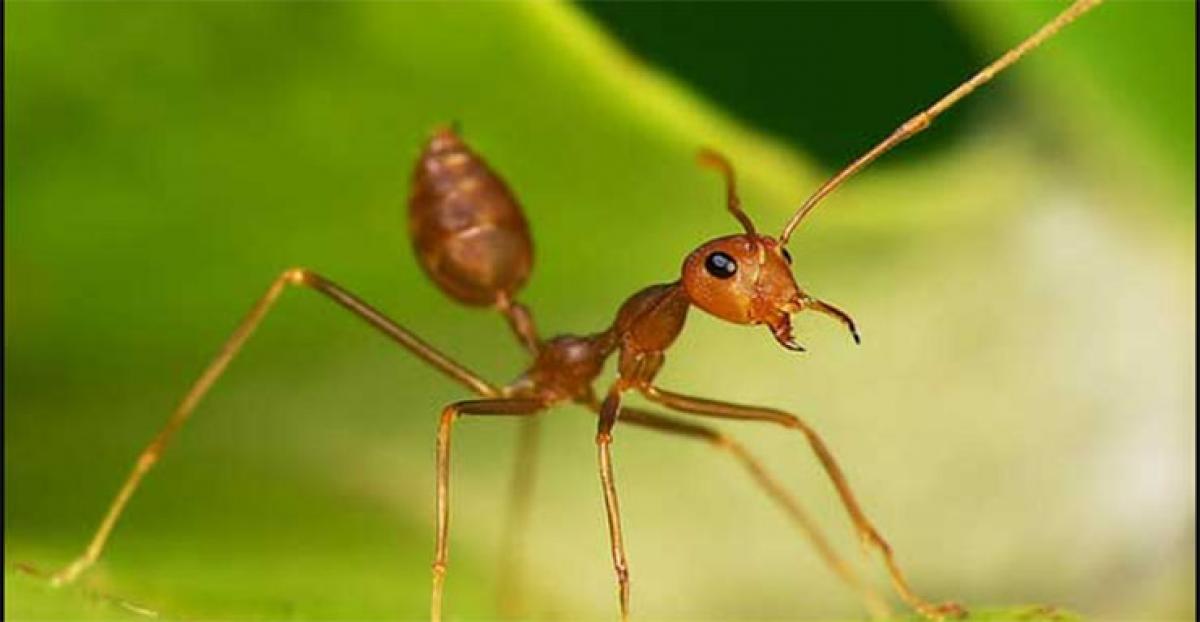Live
- Inauguration of Telangana Vision Center in Nagarkurnool
- Awareness Campaign by Agricultural College Students on Galikunta Disease for Farmers
- MLA Rajesh Reddy Inaugurates Mudiraj Association Building
- Seminar on Self-Employment and Government Schemes
- Procurement Centers Established to Support Farmers: MLA Dr. Rajesh Reddy
- Filmmakers, Actors, Comedians, Writers, Musicians, and Creators: IFP Season 14 Emerges as the Ultimate Hub of Creativity X Culture
- CM Revanth Reddy Expresses Shock Over Road Accident in Medak District
- Embracing the Power of Astras and Ancient Wisdom with Vivaan Karulkar
- DIY Skincare Masks for a Glowing Karwa Chauth
- How Menopause Can Impact Bone & Heart Health: Here’s What You Need to Know?
Just In

Modern HR Needs The Wisdom Of ‘Weaver Ants’. The corporate success will not come just from the number of capable people (they only know to do the job repeatedly) the corporate has but only from the number of ‘incapable’ people who know how to make the capable people to do the best job for the corporate.
The corporate success will not come just from the number of capable people (they only know to do the job repeatedly) the corporate has but only from the number of ‘incapable’ people who know how to make the capable people to do the best job for the corporate.
.jpg)
The bitter truth is that, no capable person, although they are ‘capable’ and however capable they are cannot perform without the help of an ‘incapable’ person. This management law/truth only the nature conveys to the corporate through its creation of ‘weaver ants’. Weaver ants are otherwise called as green ants, are a group of arboreal ant species distributed widely in different habitats. They are known for building large unique nests using leaves of the plants.
Both the queen and workers together build the nest. The knowledge about how to build the nest, how to identify the right nest site, how to bring together the foliages for building the nest, both the queen and workers know. Although they know the art of building the nest from end to end, they are not capable of producing the ‘silk’ required to stick/glue the foliages. For releasing the silk to glue the leaves (foliages), they hold their larvae and gently press them at the edges of the leaves. When the silk is released, they glue the leaves and complete the nest building process. The larvae release silk to make cocoon when they enters the next phase of the life cycle – pupae. That is why only larvae can produce silk. But the larvae do not know how to build the nest.
The larvae need the nest for its protection and so also for the large number of eggs laid by the queen. Although larvae produce silk, they do not know how to build the nest. Although the queen and workers know to build the nest, they cannot produce the silk. From that perspective, the ‘incapable’ worker ants (incapable to produce silk) employ the service of the ‘capable’ larvae (capable of producing the silk) to achieve the common goal - nest.
Imagine, if both the larvae and the worker ants were ever engaged in blaming each other about how incapable is the other, the entire colony of weaver ant might perish in no time.
Sticking together the leaves only will make the process of nest building complete. Similarly, sticking of leaves together is possible only when right nest sight is identified and leaves are brought together. When workers engaged in the later part of the nest building excise, the larvae does the former and that is how the nest building happens.
The message is that both capability and incapability are ‘limited’ and not broad based or general.
Corporate leaders must recognize and admit their ‘incapability’ first, only then they can respect and ‘utilize’ the capability of others to achieve the corporate goal. Only with such admission and acceptance, a best team can be formed or developed and the team performance can be achieved. Unfortunately, most people in corporate believe that they know everything and more than anyone else. Such arrogance or pride only affects the corporate goal and nothing else.
The HR function must learn their message from the nest building instinct of weaver ants in order to help people work as team than individuals.
Dr S Ranganathan, ClinRise Derma Pvt., Ltd., Chennai

© 2024 Hyderabad Media House Limited/The Hans India. All rights reserved. Powered by hocalwire.com







